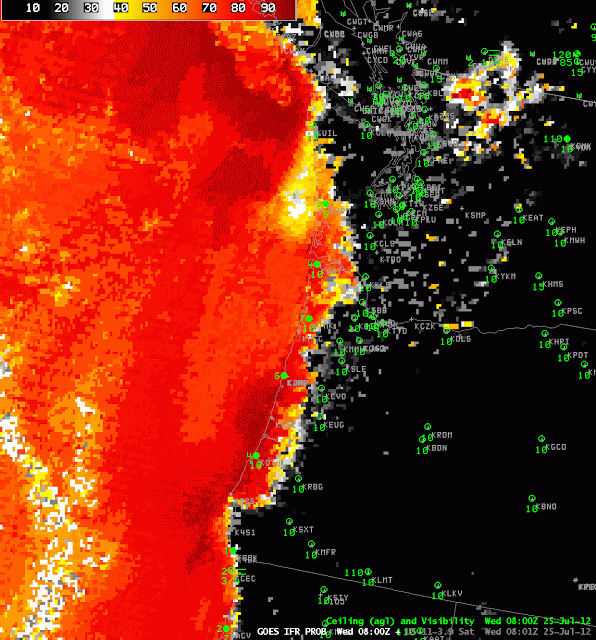 |
| Image toggle between 0800 UTC GOES-R IFR Probability and GOES-West Brightness Temperature Difference between 10.7 and 3.9 micrometers |
Because the GOES-R IFR Probabilty product uses multiple predictors in its computation of probabilities, regions where the satellite returns give erroneous signals — because of soil emissivity property changes, for example — can be suppressed if the Rapid Refresh strongly suggests fog is unlikely in that region. In this example over the Pacific Northwest on the morning of 25 July, both products correctly suggest IFR conditions are likely along the coast (and observations are congruent with that suggestion). The ‘traditional’ brightness temperature difference product, however, shows a signal over central and western Washington. IFR conditions are not present there. The GOES-R IFR product de-emphasizes the satellite signal there. This ably demonstrates a benefit in using a fused product.
